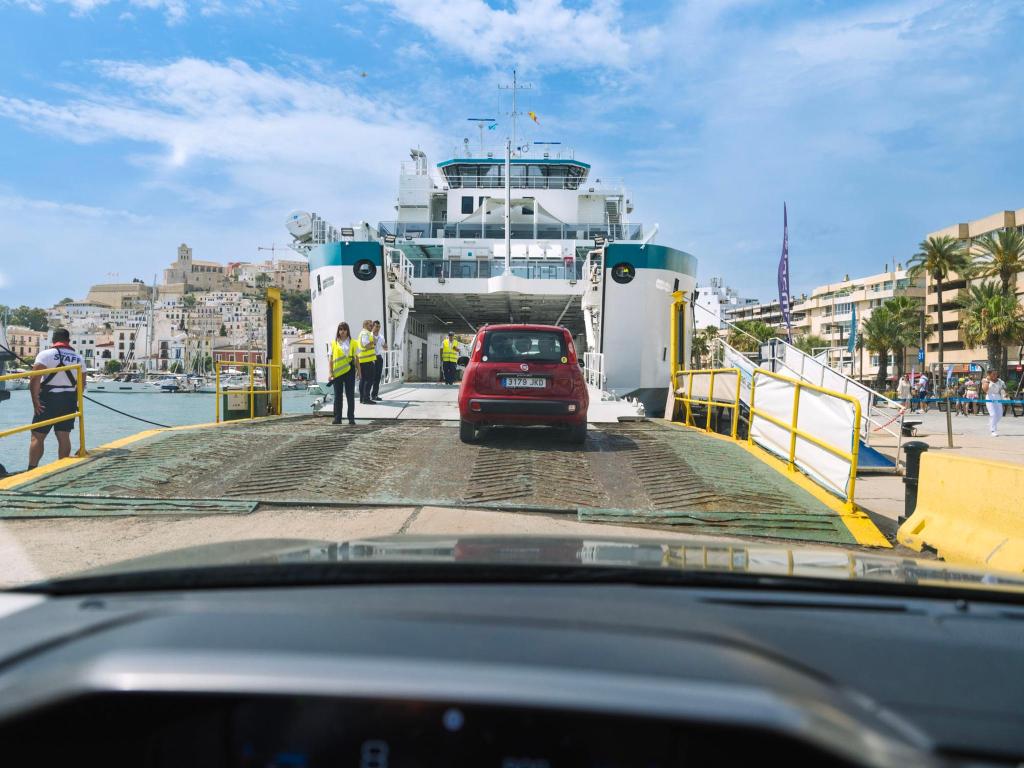
What To Take With You When You Pick Up Your Rental Car
Not sure what to take with you to pick up your rental car? Here are a few things that might come in handy:
- Ensure you have essential documents. This includes a valid driver's license, ID, credit card or other payment method, and reservation confirmation.
- For international rentals, bring your passport and check if you need an International Driving Permit (IDP).
- Consider additional items like your own GPS, car seat for children, and proof of insurance to enhance your rental experience.
Being turned away from the car rental counter because you don't have the right paperwork for your car rental is no fun. Use this guide to help you enjoy a smooth start to your trip. Know what to take with you when you pick up your rental car, whether you're renting domestically in the US or abroad.
Driving license
Your valid driving license is the most crucial document you'll need when picking up a rental car:
- Domestic rentals: bring your current, valid US driver's license. Make sure it's not expired or due to expire during your rental period.
- International rentals: along with your US license, you may need an International Driving Permit (IDP):
- An IDP is a translation of your license into multiple languages.
- It's officially required in some countries, including Japan, Greece, and Brazil, but enforcement can be lax in some countries.
- Obtain your IDP from AAA or AATA before leaving the US.
- Remember, an IDP is only valid when presented with your original license.
Pro tip: check the specific requirements of your destination country well in advance of your trip.
Proof of ID

While your driver's license serves as ID for domestic rentals, you'll need additional identification for international trips:
Passport
This is essential for international travel and car rentals abroad.
- Some car rental companies may keep a copy of your passport during the rental period.
- Many countries require that your passport is valid for at least six months beyond your planned return date. It’s good practice to consider this a requirement for car rentals, too.
Secondary ID
It's always a good idea to have a backup form of identification.
- This could be a government-issued ID card or a work ID.
- For domestic rentals, consider bringing your passport as a secondary ID, especially if you're flying to your destination.
Credit card
Most car rental companies require a credit card for the security deposit, but you may be able to rent a car without a credit card. Here's what you need to know:
- The card must be in the name of the primary driver.
- Bring the credit card that you used to make the rental reservation, if applicable.
- Debit cards are often not accepted, or may require additional documentation or higher deposit amount.
- Some rental companies require a credit card with a high limit for premium vehicles.
- If you're renting abroad, inform your credit card company of your travel plans to avoid any holds on your card.
Important: check if your credit card provides rental car insurance. If it does, you might be able to decline the rental company's collision damage waiver, potentially saving money.
Voucher or reservation confirmation

Always bring proof of your reservation:
- Digital confirmation on your smartphone is usually sufficient, but it's wise to have a printed copy as backup.
- If you've prepaid or have a special rate, make sure this is clearly indicated on your voucher.
- If your special rate requires membership with an organization, employment with a specific company, or other eligibility requirements, bring whatever proof you need for that rate.
- For international rentals, having a printed copy in the local language can be helpful if there's a language barrier.
Additional items to consider bringing

For all rentals
- Your own GPS device or cell phone with data plan: if you prefer not to rent one or use your phone. If you’re renting internationally, ensure that you have data coverage ahead of time.
- Car seat for children: bringing your own car seat can save money and ensure proper fit.
- Proof of insurance: if you're using your own car insurance to cover the rental.
- Roadside assistance information: from your credit card company or personal policy.
For international rentals
- Visa documentation: if your destination requires a visa, keep it with your passport.
- Travel insurance documents: these may cover aspects of your car rental.
- Printed maps or offline GPS: in case you don't have reliable internet access.
- Country-specific requirements: some countries require additional items. For example, many European countries require a reflective vest and warning triangle. Research your destination to ensure that you’ll comply with all requirements.
Final thoughts

Preparing for a smooth car rental experience goes beyond just having the right documents. Remember to document any existing damage with photos before leaving the lot, and take a moment to familiarize yourself with the car's features. If you're driving abroad, brush up on local traffic laws and road signs. With these preparations in place, you'll be ready to hit the road with confidence and start your adventure on the right note.

- Odměny od leteckých společností
- Tipy týkající se letů
- Zážitkové cestování
- Luxusní cestování
- Cestování na plný úvazek
 Essential Tips for Smart Car Rental Decisions2. dubna 2025
Essential Tips for Smart Car Rental Decisions2. dubna 2025 What Is an ‘SUV’ in Car Rental?2. dubna 2025
What Is an ‘SUV’ in Car Rental?2. dubna 2025 7 Airline Business Classes Compared31. března 2025
7 Airline Business Classes Compared31. března 2025 Business Travel Tips: How to Stay Productive When Flying31. března 2025
Business Travel Tips: How to Stay Productive When Flying31. března 2025 Can I Take My Hire Car on a Ferry?28. března 2025
Can I Take My Hire Car on a Ferry?28. března 2025 Got an Unexpected Charge From Your Car Rental?28. března 2025
Got an Unexpected Charge From Your Car Rental?28. března 2025 How Can I Get the Exact Hire Car That I Want?28. března 2025
How Can I Get the Exact Hire Car That I Want?28. března 2025 How To Choose Best Economy Plane Seats for Extra Legroom28. března 2025
How To Choose Best Economy Plane Seats for Extra Legroom28. března 2025 What Is a Fuel Policy?28. března 2025
What Is a Fuel Policy?28. března 2025 What To Do if You’re on a Diverted Flight?28. března 2025
What To Do if You’re on a Diverted Flight?28. března 2025 Understanding Rental Car Fees and Charges25. února 2025
Understanding Rental Car Fees and Charges25. února 2025 How To Avoid Losing Your Rental Car Deposit18. února 2025
How To Avoid Losing Your Rental Car Deposit18. února 2025 Car Rental Reviews: How Reviews Help You14. února 2025
Car Rental Reviews: How Reviews Help You14. února 2025 Tips for Returning Your Rental Car if the Counter is Closed30. prosince 2024
Tips for Returning Your Rental Car if the Counter is Closed30. prosince 2024 How to Travel with Bikes in a Rental Car: FAQs29. prosince 2024
How to Travel with Bikes in a Rental Car: FAQs29. prosince 2024 5-Minute Guide: Driving in the US28. prosince 2024
5-Minute Guide: Driving in the US28. prosince 2024 7 Easy Ways to Save Money on Car Rental27. prosince 2024
7 Easy Ways to Save Money on Car Rental27. prosince 2024 How to Rent a Car for Your Ski Trip27. prosince 2024
How to Rent a Car for Your Ski Trip27. prosince 2024 The Complete Guide To Airline Food27. prosince 2024
The Complete Guide To Airline Food27. prosince 2024 How Old Do You Have to Be to Rent a Car?26. prosince 2024
How Old Do You Have to Be to Rent a Car?26. prosince 2024 What is a Layover? A Complete Guide: Here’s What to Expect24. listopadu 2024
What is a Layover? A Complete Guide: Here’s What to Expect24. listopadu 2024 How to Get into an Airport Lounge – Expert tips and Advice24. července 2024
How to Get into an Airport Lounge – Expert tips and Advice24. července 2024 Standby Flights: What are They, and How do They Work?24. července 2024
Standby Flights: What are They, and How do They Work?24. července 2024
Mohlo by se vám také líbit
Learn more about the types of rental cars available when planning a vacation.
Your complete guide to understanding car rental fees, policies and optional add-ons to help you make informed choices.
Avoid common car rental pitfalls with our guide to the top 10 rental fails. Learn why people don't get their hire cars and how to ensure a smooth pickup.
Planning to choose an 'SUV' for your next rental? Get a clearer view of what an 'SUV' is with our handy guide.
How to avoid additional GPS/Sat Nav costs by using offline maps during your rental period.
Can I take my hire car on a ferry? Find out how to travel on a ferry with rental cars, the costs and ferry regulations for rental cars.








